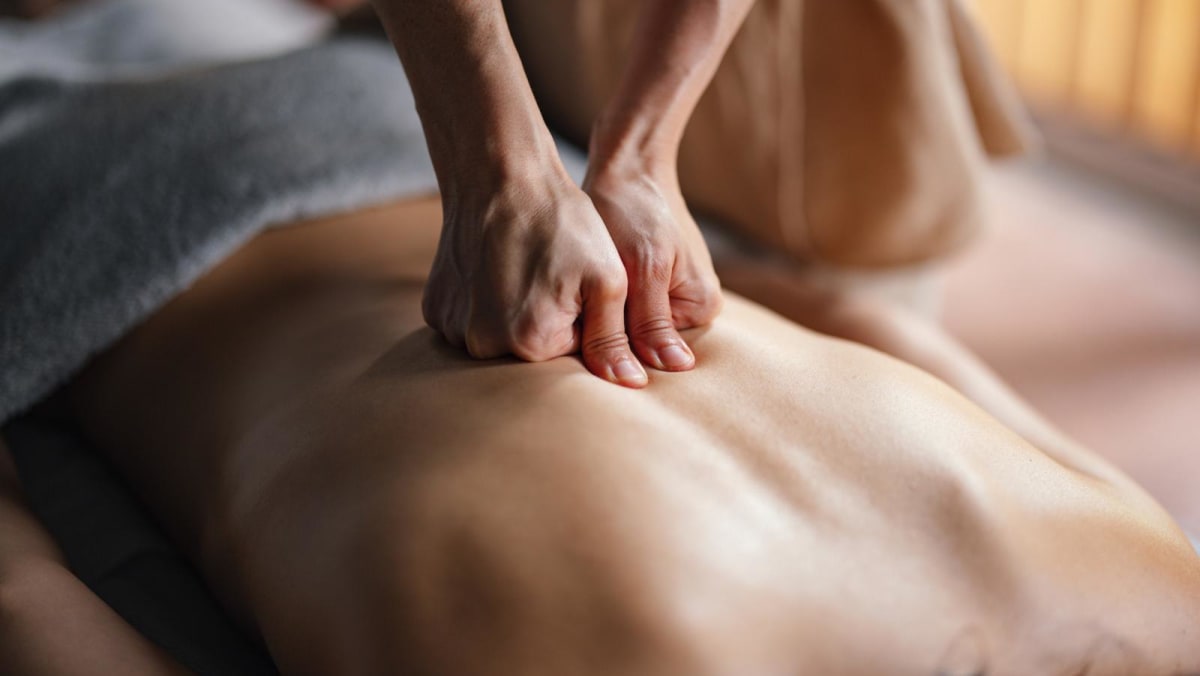WHY DO THEY HURT?
Scientists aren’t entirely sure why some knots hurt and others don’t, or why some hurt only when pressed while others ache all the time, said Christopher DaPrato, a physical therapist at the University of California, San Francisco, who studies chronic pain in athletes.
When they do cause pain, some researchers suspect it may be because of how closely the muscle fibers, fascia and nerves are packed together. “The body likes space, and when you have these knots, then you have less local space,” Dr DaPrato said.
Most experts don’t think muscle knots cause irreversible damage to your body, but they can impact your ability to move comfortably and contribute to chronic pain.
HOW DO YOU GET RID OF THEM?
Many knots will go away on their own after a week or two. But a few treatments can help to reduce pain and accelerate healing.
1. Heating pads and ice packs
Studies suggest that both heat and ice can help to reduce muscle knot pain.
While they won’t break up the knots themselves, heating or ice packs are “almost always useful for symptomatic improvement,” said Dr Lynn Gerber, a professor emerita at George Mason University who has spent decades studying and treating muscle knots.
2. Stretching
Stretching won’t eradicate knots, either, but it can also help reduce pain, in part by increasing fluid in the surrounding tissue, which allows everything to “slide and glide” more easily, Dr DaPrato said.
Experts recommend stretching either after exercise, when your muscles are warmed up, or before bed.
3. Massage
Massage can help to relieve muscle knot pain, as well as temporarily relax the contractions that cause knots – but usually only for a day or two.
Researchers theorise this has to do with blood flow: When a therapist presses on the tissue around a knot, it restricts blood flow to the area, said Zachary Gillen, an assistant professor of exercise physiology at Mississippi State University. Then, when the pressure is lifted, blood rushes in, which helps the contraction to relax and brings nutrients to the area.
Self-massage with a lacrosse ball or foam roller can have a similar effect. For knots that are impacting your quality of life, a physical therapist can perform targeted massage and also guide you through strategic exercises.
4. Needling
Dry needling, often performed by a physical therapist or acupuncturist, appears to be among the most effective longer-term treatment for muscle knots, Dr Gerber said. The process involves inserting fine needles directly into knots, and removing the needles after a few minutes. (It’s called “dry” because nothing is injected.)
Experts theorise that the treatment may be effective because it causes a micro injury to the muscle, which prompts a healing response as blood rushes in. It also may work by creating a tiny hole in the knot, Dr DaPrato said. “When you separate muscle fibres that are too compressed,” he said, “you’re now creating a little space.”
If all else fails, consider “wet needling,” Dr Goldman said, or injecting a pain medication such as corticosteroids or a numbing agent into the knot. This is usually performed in a doctor’s office.
Some doctors have begun injecting botulinum toxin (better known as Botox) into muscle knots, which may temporarily relieve pain by paralysingthe tissue, but DrGerber cautioned that there isn’t much evidence for its long-term effectiveness.

